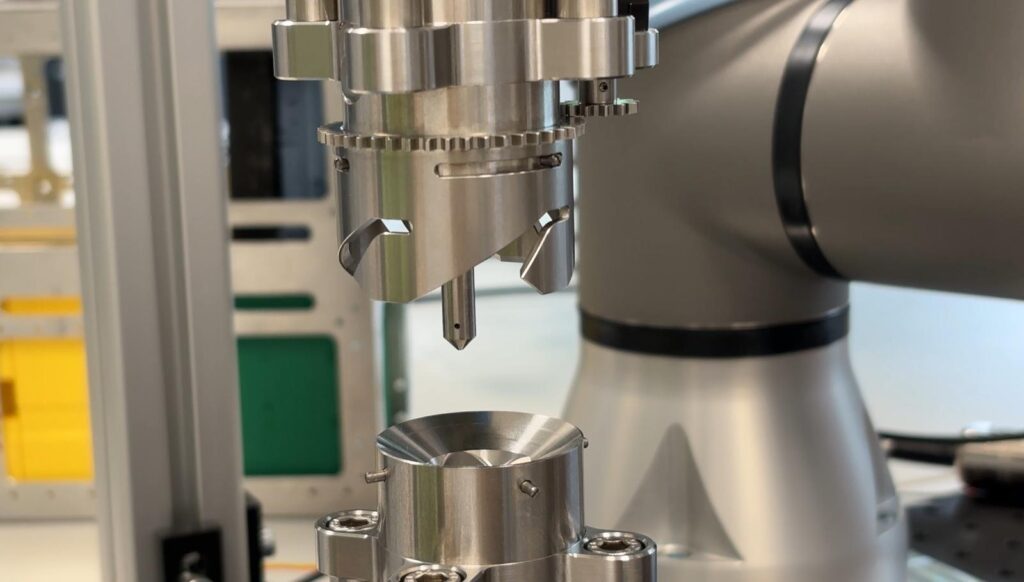Ice2Thrust Project Advances Orbital Refueling with Docking Dynamics Testbench

On the picture: A candidate refilling interface undergoing misalignment testing
As the space industry shifts toward greater sustainability and long-term mission capability, in-orbit servicing has emerged as a critical enabler for the next generation of satellite operations. Among the most essential components of this vision is the orbital refilling interface — the hardware that allows spacecraft to dock and transfer resources in the vacuum of space.
To be viable, such an interface must function reliably under real-world conditions, including misalignments, variable approach speeds, and mechanical tolerances. Addressing this challenge head-on, the Ice2Thrust project has now commissioned a custom-built docking dynamics testbench, a major milestone on the road to operational in-space refueling.
A New Tool for Realistic Docking Simulations
The newly installed testbench is engineered to simulate and quantify the dynamic interactions between two spacecraft during docking. It provides critical insights into how different variables — such as angular offsets, velocity changes, and interface loads — affect docking performance and safety.
Specifically, the testbench will help define:
Allowable approach velocities
Misalignment tolerances
Durability of mechanical interfaces over time
These insights are crucial for refining the design of docking hardware and validating its performance under conditions that are difficult or impossible to replicate with simulations alone.
Bridging Simulation and Reality
While computational models remain a foundational tool in spacecraft design, the new testbench acts as a real-world counterpart, bridging the gap between theoretical performance and actual mechanical behavior. This physical testing capability will accelerate the iterative development process, allowing faster refinement of the orbital refilling interface.
Looking Ahead: Toward Full Refueling Demonstration
With the testbench now operational, the Ice2Thrust team is moving forward with the next phases of the project:
Demonstrations of propellant transfer and operations in a vacuum environment, scheduled for early 2026
Continued development of autonomous proximity operations, a key enabler for uncrewed satellite servicing
The end goal: a complete in-orbit demonstration of a water-based satellite refueling process, showcasing the potential for extended satellite lifespans, reduced space debris, and greater mission flexibility.
Redefining the Future of Satellite Operations
The successful commissioning of the docking dynamics testbench marks a pivotal step for Ice2Thrust and the broader field of in-orbit servicing. By combining hardware innovation, physical testing, and system-level integration, the project is helping redefine what is possible in orbital sustainability and spacecraft longevity.
Stay tuned as the Ice2Thrust team pushes the boundaries of space infrastructure, one test at a time.
Contact: Tomas Mrazek, Portfolio Manager WEP Docking & ACS, tomas.mrazek(@)tum.de